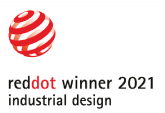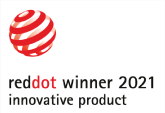Epi Pen Design and Auvi-Q
According to the Centers for Disease Control, food allergies are on the rise. Just during the three-year period spanning 2009-2011, the country saw a five percent increase in the number of kids under 18 suffering from food allergies.
For severe allergy sufferers, there is always the looming possibility of being exposed to an ingredient that the body is not meant to interact with, whether it’s peanuts, egg whites, or something else. For many, interactions with these substances trigger anaphylactic shock, resulting in death without lifesaving injection of the epinephrine hormone (also known as adrenaline).
Mylan’s EpiPen has become the medical devices' industry-standard adrenaline autoinjector for severe allergy sufferers. Whether left in mom’s purse or child’s pocket, the EpiPen has become the ubiquitous, pocket-sized choice that’s made saving lives with adrenaline injections a lot easier on playgrounds and in school lunchrooms. The EpiPen means to and has solved many problems associated with making this type of medical device a necessary part of the daily lives of its users and caregivers: size, form, and function are among the boxes ticked off by this design.
Yet the EpiPen design, like so many first-generation devices, has its limitations, which has left the playing field open for competitors to exploit some gaps in design, namely in safety and assurance. Here to address some of these concerns is a brand-new product, the Auvi-Q.
Auvi-Q is a joint effort of the global pharma giant Sanofi and Virginia-based Intelliject, the brainchild of Eric and Evan Edwards. The Edwards brothers, both lifelong allergy sufferers, have been on a 15-year journey to change the treatment of anaphylaxis. The Intelliject team has designed Auvi-Q as a disruptive departure from the EpiPen, a stark contrast to the typical me-too follow-on products one typically sees after first-generation devices create a market.
The Edwards brothers have left the pen framework and approached a form something akin to a smartphone. This standout design features about a one-half inch-thick casing that’s a rounded rectangular form—it’s nothing flashy or mind-blowing, but it has that same comfortable feel as many of today’s smartphones feature. But the differences in function and how the design incorporates them to greater guarantee effective, safe use are what drive the Auvi-Q.
Dealing with a child in the throes of anaphylactic shock can be a panicky time for a parent, friend, or teacher. The Auvi-Q, unlike predecessor devices, makes an ambitious design leap to solve this problem, providing an intelligent system that leads the user through the steps for how to use the device with auditory cues. As soon as the user removes the case, the prompts begin, offering calm guidance on administering the life-saving epinephrine. Auvi-Q even confirms the delivery of the adrenaline after dispensing.
Intelliject’s device even uses clever technology to provide post-injection safety to both user and child, another design concern from predecessor devices. Auvi-Q features needle that automatically retracts, disengaging from the patient after being deployed for five full seconds, just enough time to deliver the necessary adrenaline dose.
As a designer focused on medical devices, the genius I appreciate in the Auvi-Q is that it doesn’t overreach. The Edwards brothers and their partners at Sanofi have made a device that’s definitely a leap forward technologically in its market space, but only to the degree that’s needed by users. They’ve made the technology just sophisticated enough to improve on the user experience in the ways intended. The Auvi-Q is smart, but not excessively so—only where it needs to be. If you think about it, many times we as designers fail by trying to pack as much smart technology as possible into a design, with a “why not” attitude driving our thinking. When we do this, even with the best intentions, we’re failing job one in our product equation: thinking of the user. Technology may give a device more features, but these features may not add value. In some cases (and I’d propose that administering an injection of adrenaline to a child struggling to breathe qualifies), added features can distract the user from quick, effective use of a product.It’s evident that Sanofi and Intelliject have focused Auvi-Q on meeting the needs of the typical allergy sufferer. I, for one, will be an interested observer of this device’s marketplace performance. There’s a long list of products that have challenged and failed to dethrone the EpiPen, a true breakthrough product that has stood the test of time. As an industrial designer, I like to think that the best product—the one that is closest to meeting the user’s needs—will ultimately win out. Unfortunately, this is not always the case. This fight should be an interesting one, as one product, EpiPen, has a breakthrough design and a 25-year head start in brand-building and market share capture, while Auvi-Q has next-generation design thinking that solves the core user problem with added flair that enables greater safety and effectiveness.<p></p>


